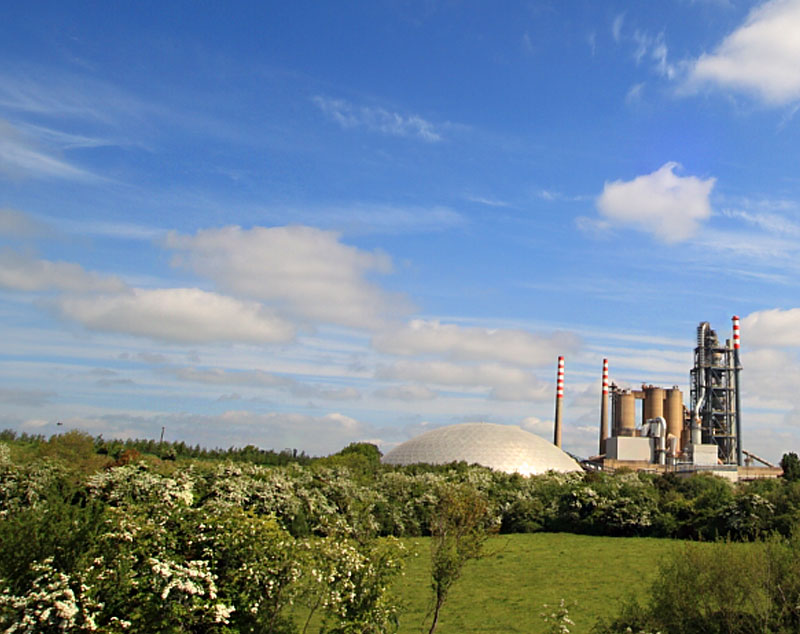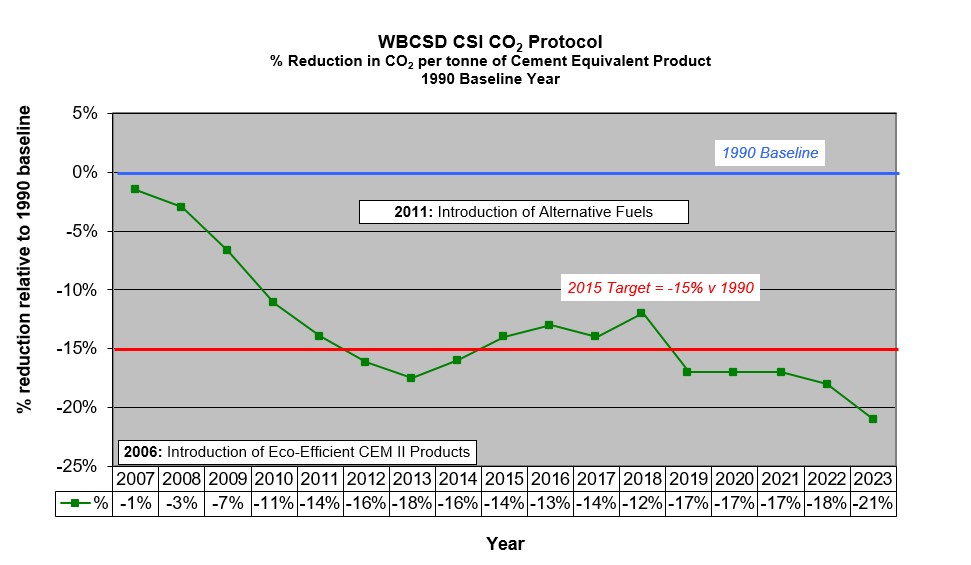

Climate Protection


Irish Cement recognises that climate change is a major global challenge and is committed to playing its part by implementing practical improvements in its manufacturing processes and products.

In the cement manufacturing process, approximately 60% of the CO2 arises from the high temperature chemical de-carbonation of the limestone raw material, with the remaining 40% resulting from fuel combustion. To ensure that all practical CO2 reduction opportunities are identified and addressed, a carbon reduction strategy has been developed which is based on investing in significant process changes based on three sustainable initiatives:
- Eco-efficient CEM II products
- Substitution of fossil fuels with Alternative Fuels
- Improvements in energy efficiency
The actions taken at each of our operating locations to achieve our goals are summarised in the Investing in Our Future strategy booklets for Platin Works and Limerick Works.
To ensure that these carbon improvement initiatives deliver real results, Irish Cement took a proactive stance by targeting a 15% reduction on 1990 levels in specific carbon dioxide (CO2) emissions by 2015. This Sustainability Target in the area of Climate Protection allows us to focus on making every tonne of Irish cement more eco-efficient even in times of market demand variability.
Our current performance against the 2015 target is shown in the graph below. The baseline year (1990) is represented by 0% on the graph and the target of -15% by 2015 is also shown for reference.

As a participating company in the EU Emissions Trading Scheme, Irish Cement rigourously measures its process and fuel related CO2 emissions using EPA approved monitoring and reporting procedures. On an annual basis, the CO2 emissions for each facility are audited and verified by the National Standards Authority of Ireland and reported to the EPA.
TECHNICAL DOCUMENTATION
Download certifications, advisory leaflets and other data in PDF format.